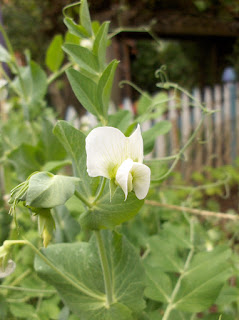As we approach the waning of summer another Sabbat draws upon us. In Pagan and Neo-Pagan traditions there are eight festival (4 Major Sabbats, 4 Lesser Esbats) which mark the year. They are significant not only because of their relation the solstice and equinox (the Esbats), but also because they tell the story of the God and Goddess (through the Sabbats and the changes of the season).
The Pagan calendar beings with Yule (December 20-23) around the Winter Solstice, as the days begin to lengthen we are reminded of the rebirth of the God from Dark King of the Underworld to Child of the Sun. We then move into Brigid's Day (Feburary 2), a celebration of Brigid and the Three-Fold manifestation of the Goddess as Maiden, Mother, Crone. Next comes the Spring Equinox and Eostar (March 20-23), this is a time of fertility where the young Sun God is first reunited with the Goddess returning from the dark of the Winter. Then on Beltane (May 1) the God and Goddess come together in marriage, and the Goddess with child, this is the origin of the may pole. On Litha at the Summer Solstice (June 20 -23) the Sun King meets the Goddess as the Queen of Summer, the union of their love becomes one, and the Sun King begins his trip towards death and his kingdom in the Underworld as the days become shorter. Lughnasad (August 1) is a harvest celebration, where the Corn King is sacrificed in wake of the Sun King. This is followed by Mabon at the Fall Equinox (September 20-23) to announce the depature of the Sun King to the west and hail his transformation into the Lord of the Shadows or the Horned God. Finally ending the Witches' year to begin the new year is Samhain (October 31) which marks the death of the Lord of the Shadows and his rebirth in the womb of the mother. This day also celebrates the Crone figure of the Goddess, and is a night for feeding our ancestors, letting go, and magick.
And so for this Lughnasad we shall be having a feast and a circle led by Flora.
"This is the wake of Lugh, the Sun King who dies with the waning year, the Corn King who dies when the grain is reaped. We stand now between hope and fear, in the time of waiting. In the fields, the grain is ripe but not yet harvested. We have worked hard to bring many things to fruition, but the rewards are not yet certain. Now the Mother becomes the Reaper, the Implacable One who feeds on life that new life may grow. Light diminishes, the days shorten, summer passes. We gather to turn the Wheel, knowing that to harvest we must sacrifice, and warmth and light must pass into winter." ~ Starhawk
1 hour ago







